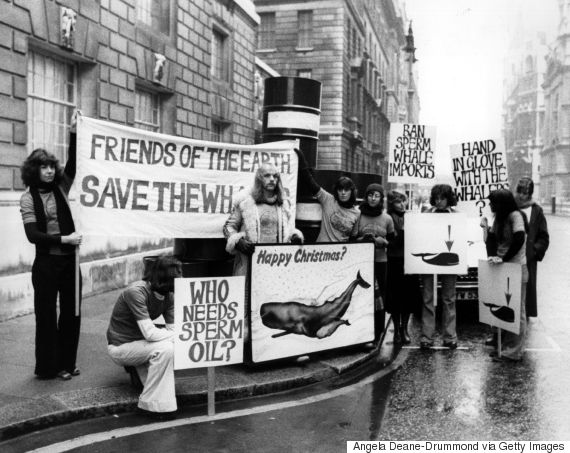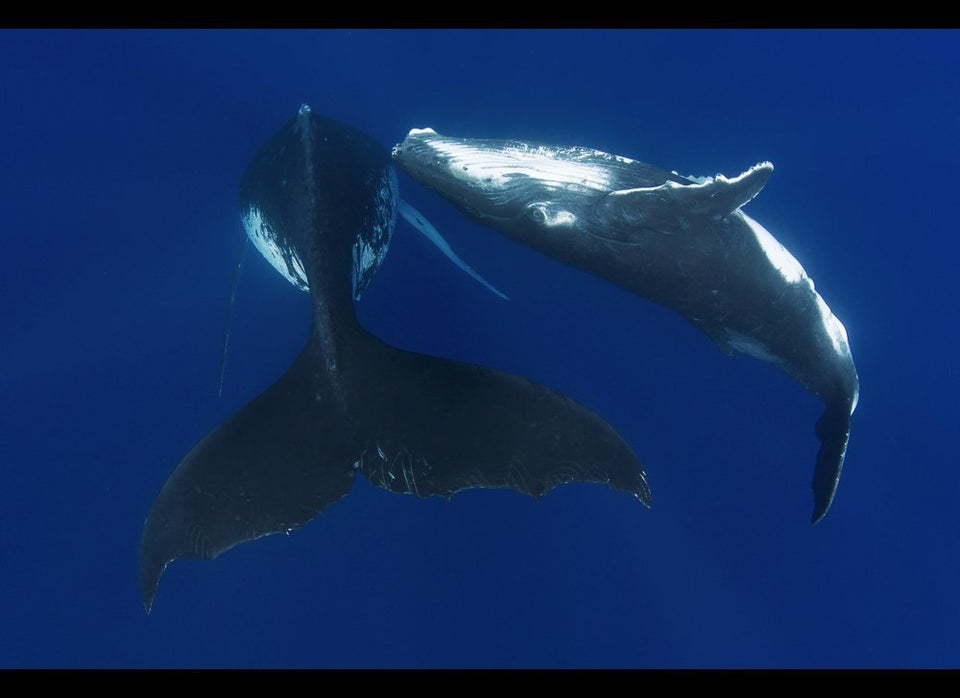It’s long been known that whales were seriously endangered during the 20th century, but new research shows just how close we came to wiping them out completely.
A study published in the March 4 issue of “Marine Fisheries Review” shows that, between 1900 and 1999, a staggering 2.9 million whales were killed commercially for food, oil or bone.
“Remarkably, despite the importance of industrial whaling to several economies and more recently as a symbol of human misuse of the world’s resources, there has until now been no attempt to estimate the total catch for the 20th century,” the study, entitled “Emptying the Oceans: A Summary of Industrial Whaling Catches in the 20th Century,” says.
(Story continues below)
A whale hunter in Hvalfjordur, Iceland, sharpens his blade to continue skinning fin whale.
Using current data from the International Whaling Commission, along with data from the USSR (which hunted whales illegally for 30 years) the researchers found that 276,442 whales were killed in the North Atlantic, 563,696 in the North Pacific and 2,053,956 in the Southern Hemisphere.
Researchers only counted whales killed industrially and found the numbers peaked in the 1960s and 1970s. (The number of whales killed for sustenance by native communities was a negligible amount in comparison.) Amazingly, the number of sperm whales killed between 1900 and 1962 was the same number of sperm whales killed in all of the 18th and 19th centuries combined. That record was then repeated in the decade spanning 1962 and 1972.
Howard Rosenbaum, the director of the Wildlife Conservation Society's Ocean Giants Program, told NBC News that the question facing researchers now is, "given the state of today's oceans and the status of some whales, can depleted populations recover to their pre-whaling historical levels?"
According to the study, Southern Ocean blue whales are said to be at less than 1 percent of their pre-whaling numbers, and while no species was brought to extinction as a result of industrialized whaling, some subpopulations were completely destroyed (such as a community of humpbacks off the coast of South Georgia from 1904 to 1915).

Protesters demonstrate outside the Ministry of Agriculture in Whitehall, London.
Public opinion turned against whale hunting in the early '70s. Judy Collins released "Whales and Nightingales," an album featuring duets with Collins and the recordings of humpback whale songs, and Rex Weyler, then-director of Greenpeace, set a new agenda for conservation efforts.
"Saving the whales became the issue that we believed would introduce humanity to the idea of ecology and saving nature," Weyler told NPR in December.
Other organizations joined Greenpeace, and by 1985, there was a moratorium on commercial deep-sea whaling.

In this Sept. 11, 2014 photo, a chef at the Tokyo restaurant "Com For Table" slices whale meat for a dish. Whale meat was one of the favorite dishes in this restaurant.
Norway, Japan and Iceland still hunt whales for commercial reasons, and others for aboriginal sustenance.
Today, there are only about 500,000 whales left in the ocean.
"The total number of whales we killed is a really important number," Stephen Palumbi, a marine ecologist at Stanford University in California, told Nature about the study's findings. "It does make a difference to what we do now: it tells us the number of whales the oceans might be able to support."

